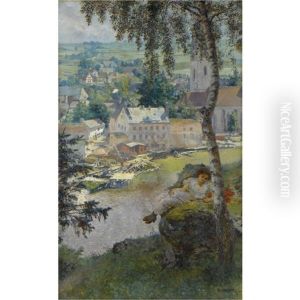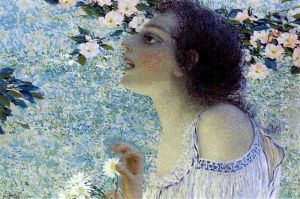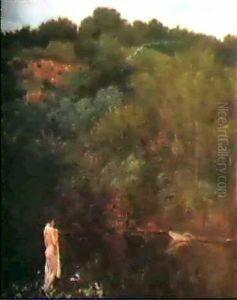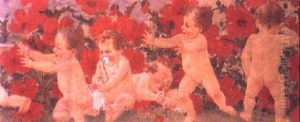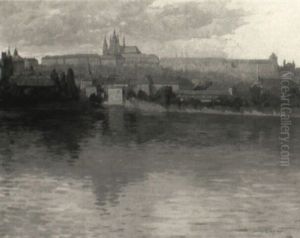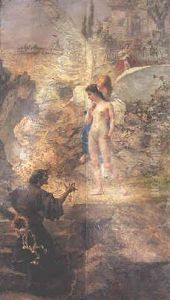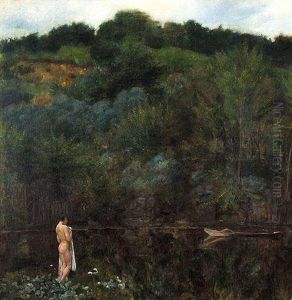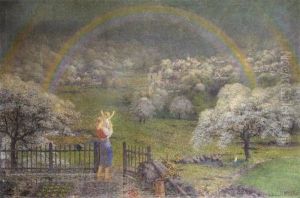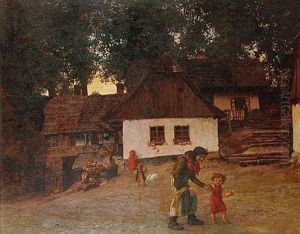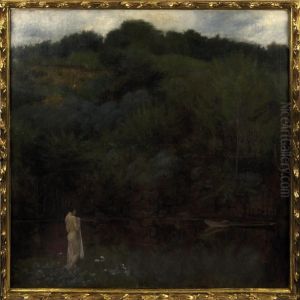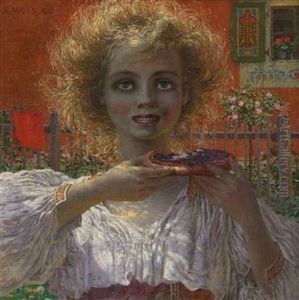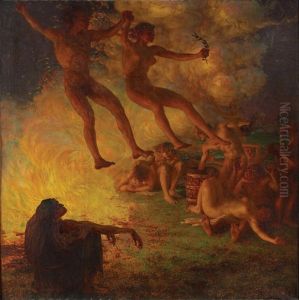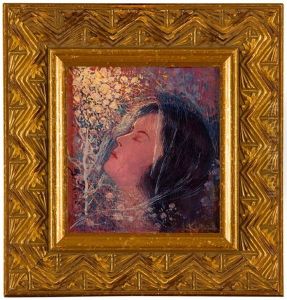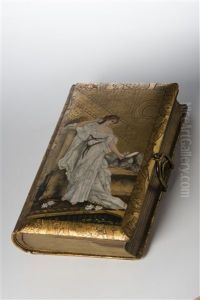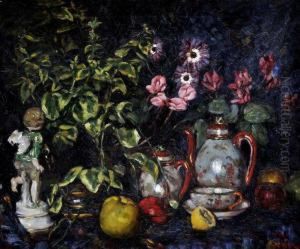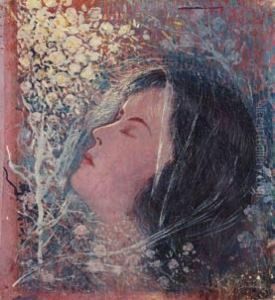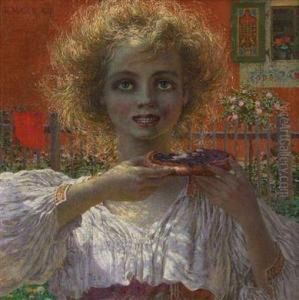Karel Vitezslav Masek Paintings
Karel Vitezslav Masek, born in 1865 in Prague, was a significant figure in the Czech art scene at the turn of the 20th century. His work, which spanned painting, graphic design, and illustration, was deeply influenced by the Art Nouveau movement, and he played a crucial role in integrating modernist aesthetics into Czech visual culture. Masek's artistic journey began at the Academy of Fine Arts in Prague, where he honed his skills and developed a distinctive style characterized by its intricate detail, vibrant color palette, and incorporation of Slavic folklore themes.
Masek's career was marked by his versatility and innovation. He was not only a painter but also an accomplished illustrator, contributing to the rich tradition of Czech book design. His illustrations for children's books and classic Czech literature helped to popularize these works and left a lasting legacy in the realm of Czech publishing. Furthermore, Masek was involved in the decorative arts, designing stained glass windows and frescoes for buildings in Prague, which showcased his ability to translate his vision onto a grand scale.
Throughout his life, Masek was deeply engaged with the artistic community in Prague and beyond. He was a member of various artistic societies, including the Mánes Union of Fine Arts, which played a pivotal role in promoting modernist art in the Czech Republic. His work was exhibited internationally, gaining recognition and acclaim, and it contributed to the dialogue between Czech artists and the broader European art movements of the time.
Karel Vitezslav Masek's death in 1927 marked the end of a career that had a profound impact on Czech art. His contributions helped to define the visual language of Czech modernism and continue to be celebrated for their beauty, depth, and cultural significance. Masek's legacy is preserved in the collections of museums in the Czech Republic and around the world, where his works continue to inspire admiration and study.
